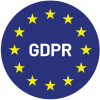Losing customers can be one of the most significant challenges to an organization’s growth. In this article, we’ll focus in on the glass-half-full perspective: retaining customers. (Prefer to start with the glass half empty? Check out this companion piece on reducing customer churn!)
What is customer retention, and why is it important?
Customer retention covers stakeholder strategies that convert one-time customers into repeat buyers over an extended period with inbuilt incentives that dissuade the latter from switching to competitors. Indeed, failure to hold on to your client base has a double-whammy effect on the bottom line. Why?
- On the one hand, you face the expense and challenge of replacing departing consumers.
- On the other hand, the long-standing revenue has disappeared.
So, never under-rate the steady revenue stream of loyal customers who keep returning to the till. The cash flow ends when they leave, creating illiquidity and a downgraded ROI.
Other studies focused on marketing strategies show that the cost of acquiring new customers is anything from five to twenty-five times higher than retaining loyal ones and that 78% of the latter category in the US are willing to pay higher prices for their brands. This implies that they are brand ambassadors, spreading the word to friends, family, and wider audiences (as influencers in the latter case), an incredible intangible asset that flies below the radar.
The longer customers participate in traversing brand touchpoints without hiccups, the more resilient the buffer to competitor attacks on loyalist preferences. Sometimes brand following reaches “cult” levels (customers swear by the promised benefits no matter how the marketing team changes direction), making it almost impossible to dent the segment. Finally, feedback from committed consumers is more forthcoming and reliable.
Recommended extra reading on retention: The Power of Brand Loyalty In Today’s Marketplace.
How do you calculate customer retention?
When considering how to calculate customer retention, two primary methods enter the picture: CLTV and CRR.
1. The Customer Lifetime Value (CLTV) Model
This approach (see below) supports the most critical retention insights. CLTV is one of the most recognized business health barometers, able to measure sustained business practices that enrich customer experiences (CXs) and prolong customer journeys.
CLTV = APV x APF x CL
(where APV = Average Purchase Value; APF = Average Purchase Frequency; CL – Customer Lifespan)
- The “LTV” piece in the formula shifts the focus from short-term thinking to lasting customer relationships.
- t’s the essence of generating revenue over time by pushing APV up steadily and getting more repeats in an extended lifecycle.
- In contrast, while an initial purchase may be exciting, it doesn’t provide the broad outlook that a retention-centric approach delivers.
In summary, projecting CLTV tells us how much we can afford to invest in customer acquisition based on ushering them into the brand loyalty arena.
Finally, applying CLTV to your market segmentation research creates an opportunity to rate different customer groups to see which represents the most compelling value, warranting extra attention.
2. Customer Retention Rate (CRR)
CLTV requires sophisticated data resources and analytics delivered by AI-empowered software with algorithms attuned to retention strategies. Small businesses only beginning to be aware of brand ambassadors and their connection to ROI may want a shorter, more straightforward metric to guide their planning. CRR is your ticket to making those calculations for any period (usually a year or more), using 12 months in 2024 and a fictitious company (FC) as an example:
FC’s customer numbers are as follows:
- At 1st January 2024 (S) = 1,100
- At 31st December 2024 (E) = 1,500
- Newly acquired during 2024 (N) = 70
CRR = {(E – N) / S} x 100.
For FC CRR is: {(1,500 – 700) / 1,100} x 100 = 800/1,100 x 100 = 72.7%
Thus, FC’s annual Customer Retention Rate (CRR) is 72.7% for 2024. In other words, they lost 27.3% of the customers in place at the beginning of the year.
The customer loss (27.3%) in the above case is “churn,” representing the costly loss of repeat buyers, as cited above in our introduction. Of course, many customers counted in S may have yet to be fully-fledged brand loyalists (e.g., more-than-one-time buyers). Also, every company, even the high-growth successful ones, experiences some customer loss, regarded as “healthy churn.”
According to Recurly Research, Custom Gauge, and Pacific Crest (reputable research entities), healthy averages vary by industry, ranging between one and fifteen percent. Generally speaking, single-digit churn is widely acceptable; ten to fifteen percent makes sense in many industries, and over 15% may require stakeholder attention after closer analysis of genuine loyal customer loss.
6 best customer retention tips to improve your retention rate
The case for customer retention is convincing if you want to impact your P&L, balance sheet, and supporting financials. Here are some suggestions for taking your retention initiatives to the next level.
1. Know customers’ emotional and cognitive drivers
Erasing pain points lies at the crux of promoting benefits. However, marketers frequently fail to define customer reasons for entering the marketplace in the first place or assume buyers know what’s bothering them. They may be wrong on both counts. Why? Emotional discomfort is challenging for respondents to verbalize and often is subconscious, so they can’t identify the core needs even if they try. Strategists trying to discover and investigate can directly connect benefits to pain points for a fast and favorable response.
Sogolytics is a customer experience company providing psychographic segmentation resources to identify prospects’ aspirations, preferences, influencer groups, and visions attached to your brand. It’s a primary route to creating a meaningful retention proposition. This tip will enable you to customize your products and services, website and promotional messages, loyalty programs, and more to extend customer lifecycles and maximize CLTV.
2. Get your customer onboarding right
A massive marketer error is assuming your customer’s first purchase automatically transitions into repeat-buying. You shouldn’t take that for granted because when consumers dip their toes in the water, it doesn’t mean they’re ready to swim. So, your onboarding tactics must kick in here to convert mild interest to loyalty. What’s involved?
- Constantly surveying clients with customer satisfaction surveys to determine if their customer experiences (CXs) match your expectations.
- Welcoming new customers into the brand family with personalized messages.
- Offering incentives to try other lines or make a second purchase.
- Promoting your brand loyalty program to make applying for membership exciting.
- Streamlining your contact center, training, and technical support to answer typical new customer queries
- Ensuring your chatbots and AI-enhanced resources are functioning with all cylinders firing so new customers are satisfied with services attached to usage
- Determining where onboarding and confirmed loyalty begin and end to keep the momentum going.
Recommended extra reading on onboarding: Onboarding 101: Why Customer Onboarding Matters More Than You Think.
3. Personalize your communications
Contacting your customers via email, social media, newsletters, chatbots, call centers, zoom conferencing, and more must include personalized recommendations, product suggestions, and content by using the data analytics at your disposal. It circles back to knowing your customer’s ins and outs highlighted in Tip #1 above, including name, birth date, education, and other critical demographics. The more you know about your customers the better the chances of striking a responsive chord while communicating non-generically.
4. Maintain a consistent customer feedback program
Surveys and data analytics connect to most tips under this section. Why? NPS scoring, CSAT surveys, qualitative monitoring of SM reviews, AI probes into call center recordings, and voice-to-text translations pick up sensitive issues, providing clues and insights into customer satisfaction with brand value.
Stakeholders will find it nearly impossible to personalize content, onboard effectively, or align with customers’ pain points unless the feedback is organized, streamlined, systematic, and technology-centric. Regarding this, companies like Sogolytics can deliver integrated survey and analysis support to create a result you’ll be happy with from start to finish. In short, quantitative and qualitative feedback lets you update your business and adjust quickly to volatility in modern markets.
Recommended extra reading on CX programs: The Ultimate Framework for Customer Experience Management: A Comprehensive Guide.
5. Develop an exciting customer loyalty program
Customers exiting a structured onboarding stage should feel ready and willing to enter the next crucial phase of customer commitment – brand commitment. There’s nothing more inviting and appealing than a loyalty program with a consistent stream of genuine rewards for repeat buyers.
Points and tier systems layer the benefits of membership, recognizing the dollar value of annual purchases or customer lifecycle durations. However, be sure your members will translate their allocated points to dollar values and scrutinize tiers to assess if moving up the ladder offers significant money-in-the-pocket value. So, your system must offer innovative, extraordinary, engaging, and exclusive benefits compared to non-loyalist incentives. Otherwise, it will likely fall flat. In other words:
- Loyalists want to feel special, expecting personalization as a minimum ingredient.
- They anticipate first-dibs invitations to brand gala events and introductions.
- Black Friday, Cyber Monday, and Friends & Family promotions are pivotal milestones to show respect for brand ambassadors with members-only price advantages
- Tiering is a robust method of incentivization, but not if it creates resentment with lower-tired customers – a frequent occurrence when moving up is too challenging or the reward differentiations make no sense.
Recommended extra reading on loyalty: 6 Customer Loyalty Program Errors That Kill Customer Engagement.
6. Put customer service on a pedestal
Digital communications and e-commerce have heralded the age of enhanced customer support using AI for routine tasks, freeing agents with comprehensive training to help clients in every aspect of the CX. These include:
-
- Navigating the website (accessing automated and human-assisted chatbots).
- Contact centers functioning
- Omnichannel connection
- Meeting every predictable customer issue, from usage instructions to returns, billing information, complaints, and more.
Like surveys, data analytics, and feedback, this recommendation overlaps almost every aspect of your customer retention strategy.
Recommended extra reading on services: Customer Service Skills in 2025 and Beyond.
Conclusion
The primary influences driving customer retention provide stakeholders with a comprehensive roadmap to an improved ROI. The six tips cover a corner-to-corner overview of the initiatives that quickly result in accelerated consumer brand loyalty and extended lifecycles.
I’ve also equipped you with the primary barometers of customer retention with calculation formulas from one year to entire lifecycles. Fundamental actions that cover all retention drivers revolve around structuring impeccable customer service and staying in touch with consistent feedback methods to monitor changes in volatile markets.
It’s a field fundamentally connected to financial performance, so the room for trial and error is limited. Connect with a company like Sogolytics to evaluate your retention planning or develop one from scratch. Their broad resources will help you diminish churn and create brand ambassadors from increased customer loyalists. Contact us today for a review of your business’s customer retention strategy.
FAQs
Q1: What is customer retention?
A: Customer retention covers stakeholder strategies that convert one-time customers into repeat buyers over an extended period with inbuilt incentives that dissuade the latter from switching to competitors.
Q2: What are the best ways of calculating customer retention?
A: The Customer Lifetime Value (CLTV) Model and Customer Retention Rate (CRR) – explained in the article above.
Q3: Why is retention so crucial for stakeholders to know about?
A: The cost of acquiring new customers is anything from five to twenty-five times higher than retaining loyal ones, and 78% of the latter category in the US are willing to pay higher prices for their brands.
Q4: What’s an impressive retention rate over a year?
A: According to Recurly Research, Custom Gauge, and Pacific Crest (reputable research entities), healthy averages vary by industry, ranging between one and fifteen percent. Generally speaking, single-digit churn is widely acceptable, ten to fifteen percent makes sense in many industries, and over 15% requires adjustment and stakeholder attention.














